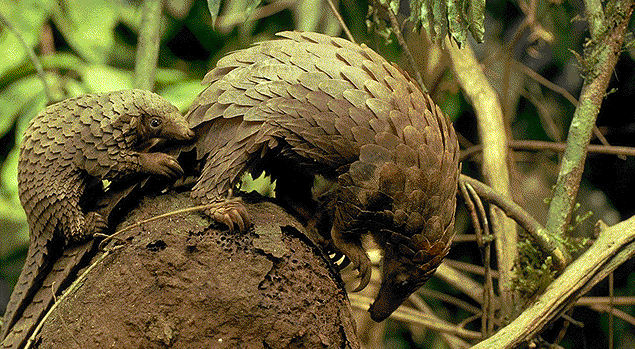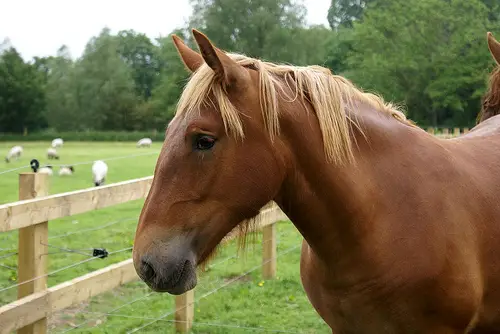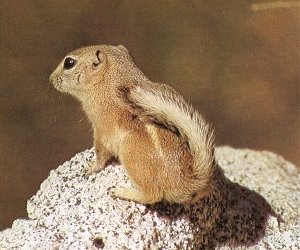Pangolin
The Pangolin is probably one of the weirdest mammals on Earth, as it doesn’t really look like a mammal because its whole body is covered in large keratin scales, which serve them as an unusual form of armor. These rather small mammals inhabit the tropical regions of Africa and Asia.
These scaled mammals are divided in several species, however, paleontologists often argue about what order the Pangolins should be classified with, an amusingly enough, these small mammals that don’t even have teeth have been announced to be very close relatives of the Carnivora order, which includes predatory animals such as cats, bears and wolves.
The size of the Pangolins varies by species, ranging from 40 to 100 cm. Their weight is 12 to 18 kilograms, up to 20% of which can be made up of its scales. It should also be noted, that the Pangolins have extremely elongated tongues, which can be extended as much as 40 cm (comparable to tongues of the Giant Anteaters). The Pangolins lead a nocturnal lifestyle, spending daytime in their burrows, which can exceed 6 metres.
The Pangolins lead solitary lives and mostly feed on ants and termites. Much like the anteaters, these animals also use their strong claws to rip open ant mounds or a termite nests and use their extremely long tongues covered with sticky saliva to eat the insects. The Pangolins have very poorly evolved eyesight and rely mostly on their highly advanced sense of smell to find food.
The Pangolins have a gestation period of four to five months, after which one or sometimes two young are born in the mother’s burrow. They develop fairly quickly and start leaving the burrow and look for ant mounds together with their mothers after 3-4 months, but they still remain quite dependent on the mother for some time.
The Pangolin doesn’t have many natural predators – only the fiercest carnivores, such as hyenas and leopards, would dare try hunting them. What protects these tiny mammals is their uniquely adapted natural armor layer. When in danger, they roll up in an impenetrable razor ball and it take quite a lot of force to unroll them. Also, they have special muscles that ensure the cutting function of the scales, severely harming anything that is inserted between the Pangolin’s scales.
Humans have associated Pangolins with many beliefs and rituals throughout time. Their scales are supposed to protect from evil, their bones supposedly grant luck and so on. Also, their meat is widely used in dishes in China and other Asian countries. As many of the Pangolin species are classified as “Threatened”, authorities devote much time and funds to fight with illegal Pangolin killing, although it isn’t as easy when whole nations of people have been used to eating the Pangolins in various dishes, just like Europeans are used to pork.





I am writing an article about Pangolins for a childrens magazine and would like to use one of your photo’s. Would you allow me to use one and if so, what is the process.
Thanks
good on ya for telling children about this endangered species!!!
Thank you, I am doing a project on a pangolin and your information really helped me. Thank you again!!!